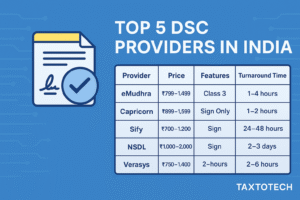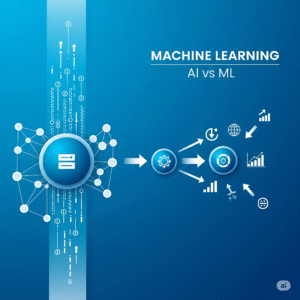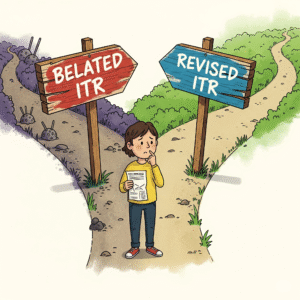In today’s interconnected economy, businesses rarely operate within a single national border. Expanding globally opens doors to vast opportunities, but it also ushers in a bewildering maze of international tax laws. From varying tax rates and complex treaties to the ever-evolving landscape of global compliance initiatives like BEPS (Base Erosion and Profit Shifting), staying compliant across multiple jurisdictions can feel like an impossible task. The risks of missteps are severe, including hefty penalties, reputational damage, and costly audits.
For traditional tax departments, managing this complexity often means relying on manual processes, outdated spreadsheets, and an army of legal and tax experts – a reactive and resource-intensive approach. However, the paradigm is shifting. At Taxtotech, we see a future where AI’s role in global business compliance isn’t just an advantage, but a necessity. Artificial Intelligence is emerging as a powerful ally, transforming how multinational corporations (MNCs) navigate the intricacies of cross-border taxation, ensuring accuracy, efficiency, and proactive risk management. Let’s explore how AI is revolutionizing global tax compliance and strategy.
The Labyrinth of International Tax Regulations
The challenges in international taxation are multifaceted and constantly in flux:
- Diverse Tax Regimes: Every country has its own set of tax laws, rates, and reporting requirements, making a standardized approach impossible.
- Tax Treaties: While designed to prevent double taxation, interpreting and applying hundreds of bilateral tax treaties is incredibly complex and requires nuanced understanding.
- BEPS Initiatives: The OECD’s BEPS project and its subsequent Pillars (Pillar One and Pillar Two for global minimum tax) are fundamentally reshaping international tax, introducing new rules for profit allocation, digital services tax, and enhanced transparency. Keeping up is a major headache.
- Permanent Establishment (PE) Risk: Determining if a company’s activities in a foreign country constitute a “permanent establishment” (triggering local tax obligations) is highly subjective and depends on specific facts and local interpretations.
- Transfer Pricing: Ensuring that intercompany transactions (e.g., goods, services, intellectual property) are priced at “arm’s length” as if between unrelated parties is a major area of scrutiny and requires extensive documentation.
- Withholding Taxes: Understanding and correctly applying withholding taxes on cross-border payments (dividends, interest, royalties) adds another layer of complexity.
- Digital Economy Taxation: The rise of the digital economy has led to new concepts like Digital Services Taxes and virtual PEs, further complicating traditional tax nexus rules.
These complexities not only demand significant resources but also expose businesses to substantial risks if not managed meticulously.
How AI Transforms Global Tax Compliance
This is where AI’s role in global business compliance becomes indispensable. AI-powered tools provide unprecedented capabilities to manage, analyze, and predict outcomes in the international tax arena:
- Real-time Regulatory Monitoring and Impact Analysis:
- The Power: AI systems, particularly those leveraging Natural Language Processing (NLP), can continuously monitor vast global databases of tax legislation, court rulings, and regulatory guidance. They can identify, track, and interpret changes in real-time across hundreds of jurisdictions.
- Compliance Benefit: Proactive alerts enable tax teams to understand the immediate and future implications of new laws (e.g., BEPS Pillar Two implementation, VAT/GST rate changes) on their specific global operations, allowing for swift adjustments to strategy and processes. This moves compliance from reactive to predictive.
- Automated Data Harmonization for Multi-Jurisdictional Reporting:
- The Power: MNCs operate with disparate Enterprise Resource Planning (ERP) systems, accounting platforms, and financial reporting tools across different countries, leading to fragmented data. AI can ingest, cleanse, normalize, and reconcile this massive volume of data into a unified, tax-ready format, regardless of source system or currency.
- Compliance Benefit: Creates a single source of truth for global tax data, drastically reducing the time and errors associated with manual data aggregation for country-by-country reporting (CbCR), master files, local files, and other cross-border disclosures.
- Permanent Establishment (PE) Risk Assessment:
- The Power: AI algorithms can analyze operational data, employee locations, sales activities, digital footprints, and contractual agreements to identify patterns and potential triggers for permanent establishment risks in various territories. It can assess the likelihood of a PE being asserted by a foreign tax authority.
- Compliance Benefit: Proactive identification of PE risks allows businesses to adjust their operational models or undertake defensive tax planning to mitigate unintended tax obligations and avoid costly disputes.
- Transfer Pricing Documentation & Management:
- The Power: AI can automate the labor-intensive process of transfer pricing (TP) analysis and documentation. This includes identifying comparable companies for benchmarking analyses, analyzing intercompany transactions for arm’s length compliance, flagging anomalies, and automating the generation of comprehensive TP reports. Generative AI can even assist in drafting narrative portions of TP documentation.
- Compliance Benefit: Ensures rigorous adherence to TP regulations worldwide, significantly reduces the time and cost associated with documentation, and strengthens a company’s position in case of a TP audit.
- Global Indirect Tax (VAT/GST) Compliance:
- The Power: AI can automatically classify transactions for VAT/GST purposes, determine the correct rates across different regions, manage invoicing requirements, and reconcile indirect tax data. This is particularly crucial for e-commerce businesses with cross-border sales.
- Compliance Benefit: Minimizes errors in complex indirect tax calculations and filings, reducing penalties and ensuring accurate collection and remittance of sales taxes globally.
- Tax Treaty Interpretation & Application:
- The Power: NLP and machine learning can analyze the complex language of double taxation treaties, cross-referencing them with specific corporate activities and transactions. AI can highlight relevant clauses, identify potential benefits (e.g., reduced withholding tax rates), and flag areas of ambiguity.
- Compliance Benefit: Ensures optimal application of treaty benefits, preventing double taxation and ensuring compliance with the nuanced terms of international agreements.
Key International Tax Challenges Solved by AI
| International Tax Challenge | Traditional Approach (Pain Points) | AI’s Role in Global Business Compliance (Solution & Benefit) |
| Regulatory Volatility | Manual monitoring, delayed response to law changes, risk of non-compliance. | Real-time AI monitoring of global tax laws, immediate impact analysis, proactive alerts. |
| Data Silos & Volume | Disparate systems, manual aggregation, data inconsistencies, high error rate. | Automated data harmonization, cleansing, and consolidation from all global sources into a unified tax data model. |
| Permanent Establishment (PE) | Subjective assessment, high manual effort, significant undetected risk. | AI analyzes operational data to proactively assess PE risk, flagging potential triggers and advising on mitigation. |
| Transfer Pricing (TP) | Labor-intensive benchmarking, manual documentation, high audit exposure. | AI automates comparable searches, transaction analysis, and documentation generation; flags non-arm’s length transactions. |
| Indirect Tax Complexity (VAT/GST) | Manual classification, misapplication of rates, reconciliation errors. | AI-driven transaction classification, automated rate determination, and seamless reconciliation across global jurisdictions. |
| Tax Treaty Interpretation | Expert-dependent, time-consuming manual review, potential for missed benefits. | NLP-powered analysis of treaty clauses, identification of benefits, and application guidance based on specific scenarios. |
Implementing AI for Global Tax Compliance: Key Considerations
Successfully integrating AI’s role in global business compliance requires more than just purchasing software. It demands a strategic approach:
- Robust Data Strategy: AI thrives on clean, consistent, and accessible data. Invest in a strong data governance framework and ensure interoperability across your global systems.
- Collaborate with Legal & IT: Effective AI implementation requires close collaboration between tax professionals, legal counsel (for regulatory interpretation), and IT (for system integration and data security).
- Phased Rollout: Start with a pilot program in a specific area (e.g., CbCR data aggregation or a specific transfer pricing process) to prove value and refine the approach before broader implementation.
- Upskill Your Tax Team: AI tools augment, not replace, human expertise. Train your tax professionals to leverage AI insights, validate outputs, and focus on higher-value strategic advisory roles.
- Vendor Selection: Choose AI solution providers with proven expertise in international tax, strong security protocols, and a track record of adapting to global regulatory changes.
The Strategic Advantage: Beyond Compliance
While the primary driver for adopting AI in international tax is compliance, its true value lies in enabling strategic advantage. AI’s role in global business compliance extends to:
- Optimized Tax Planning: With real-time visibility into global tax positions and the ability to model various scenarios, businesses can make informed decisions about entity structuring, supply chain optimization, and M&A activities to legally minimize their global tax burden.
- Enhanced Cash Flow Management: Accurate forecasting of international tax liabilities allows for better cash flow planning and reduces unforeseen tax payments.
- Reduced Penalties and Disputes: Proactive identification and mitigation of risks significantly lower the chances of audits, penalties, and lengthy tax disputes, saving both money and management time.
- Improved Resource Allocation: Automating repetitive, data-intensive tasks frees up highly skilled tax professionals to focus on complex analysis, strategic initiatives, and engaging with internal stakeholders.
- Stronger Corporate Governance & Reputation: Demonstrating robust global tax compliance through AI-driven transparency and accuracy enhances a company’s reputation with investors, regulators, and the public.
AI’s Impact on Global Business Compliance & Strategy
| Impact Area | Without AI (Typical Outcome) | With AI (Enhanced Outcome) |
| Compliance Accuracy | High risk of human error, missed regulations, non-compliance. | Near real-time accuracy, proactive error detection, high compliance adherence. |
| Operational Efficiency | Labor-intensive, slow data processing, reactive. | Automated data workflows, rapid analysis, significant time/cost savings. |
| Risk Exposure | High audit risk, unforeseen penalties, reputational damage. | Proactive risk identification, strengthened audit defense, minimized penalty exposure. |
| Strategic Planning | Limited by data availability, reactive, less agile. | Data-driven insights, dynamic scenario modeling, informed global strategic decisions. |
| Resource Allocation | Tax team bogged down by manual tasks, less focus on value-add. | Tax professionals focus on high-value analysis, advisory, and complex problem-solving. |
| Global Visibility | Fragmented views, delayed insights into global tax position. | Unified global tax data view, real-time insights across all jurisdictions. |
Conclusion: Empowering Your Global Tax Journey with AI
The intricate world of international tax laws is no longer a domain where traditional methods can suffice. For any global business, embracing AI’s role in global business compliance is not just about meeting regulatory obligations; it’s about transforming a compliance function into a strategic powerhouse. AI-powered tools provide the intelligence, speed, and accuracy needed to navigate the complexities of cross-border taxation, mitigate risks, and unlock significant value.
At Taxtotech, we believe that understanding and adopting these advanced technological solutions is essential for sustainable global growth. By leveraging AI, your business can achieve a competitive edge, ensuring robust compliance while optimizing your tax position on a global scale. Don’t let international tax complexities hold you back; let AI guide your journey.
We invite our Taxtotech Readers, especially those involved in global operations, to share their experiences!
- What’s the biggest international tax challenge your company faces?
- Have you started integrating AI into your global tax compliance efforts? If so, what results have you seen?
- What future advancements in AI do you think will have the most significant impact on international tax?
Share your thoughts and insights in the comments below! Your valuable input helps our community navigate the exciting evolution of global tax. And for more cutting-edge insights on how technology is revolutionizing finance, remember to visit https://taxtotech.com. Let’s unlock global tax efficiency with AI!

















